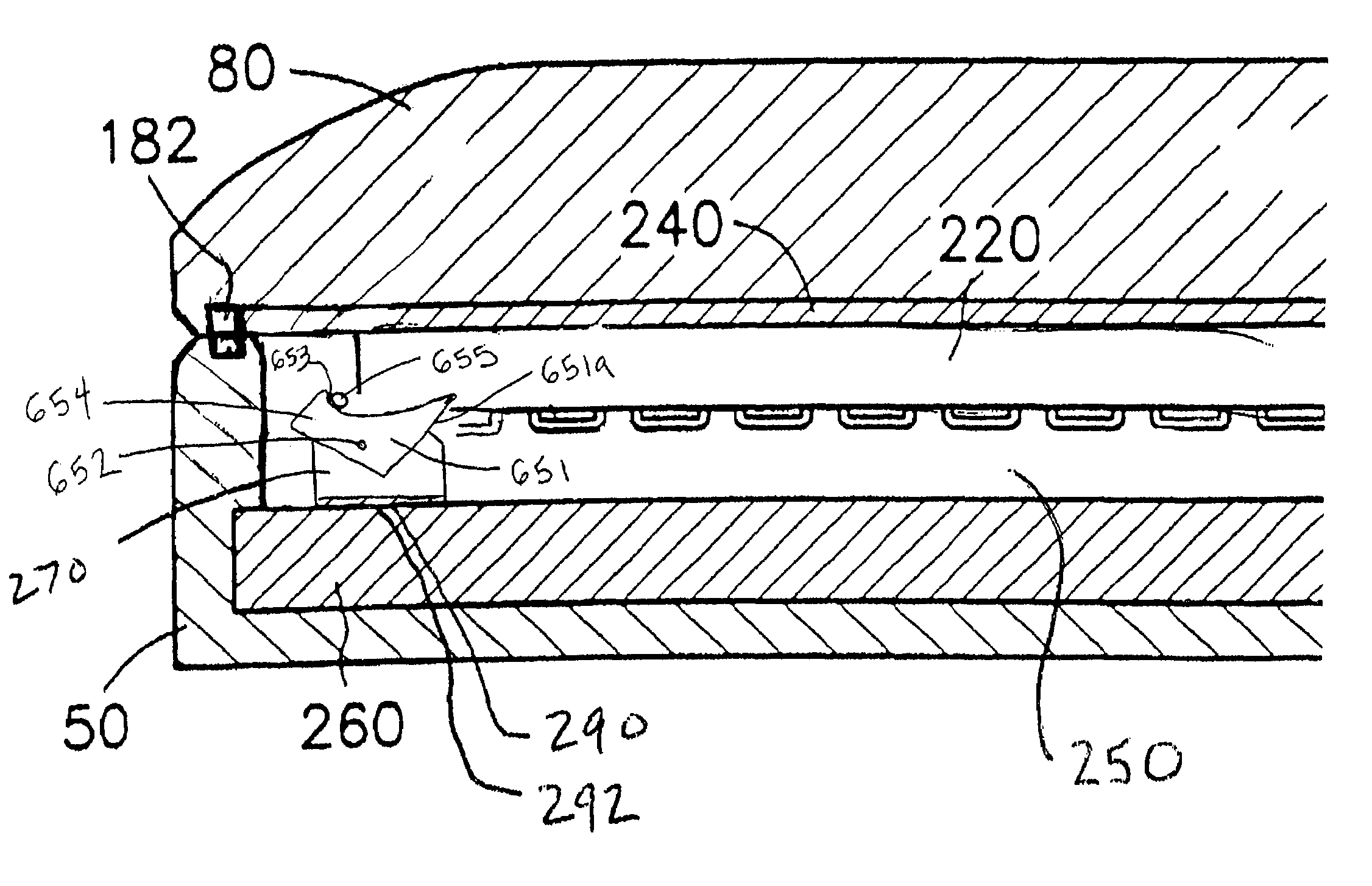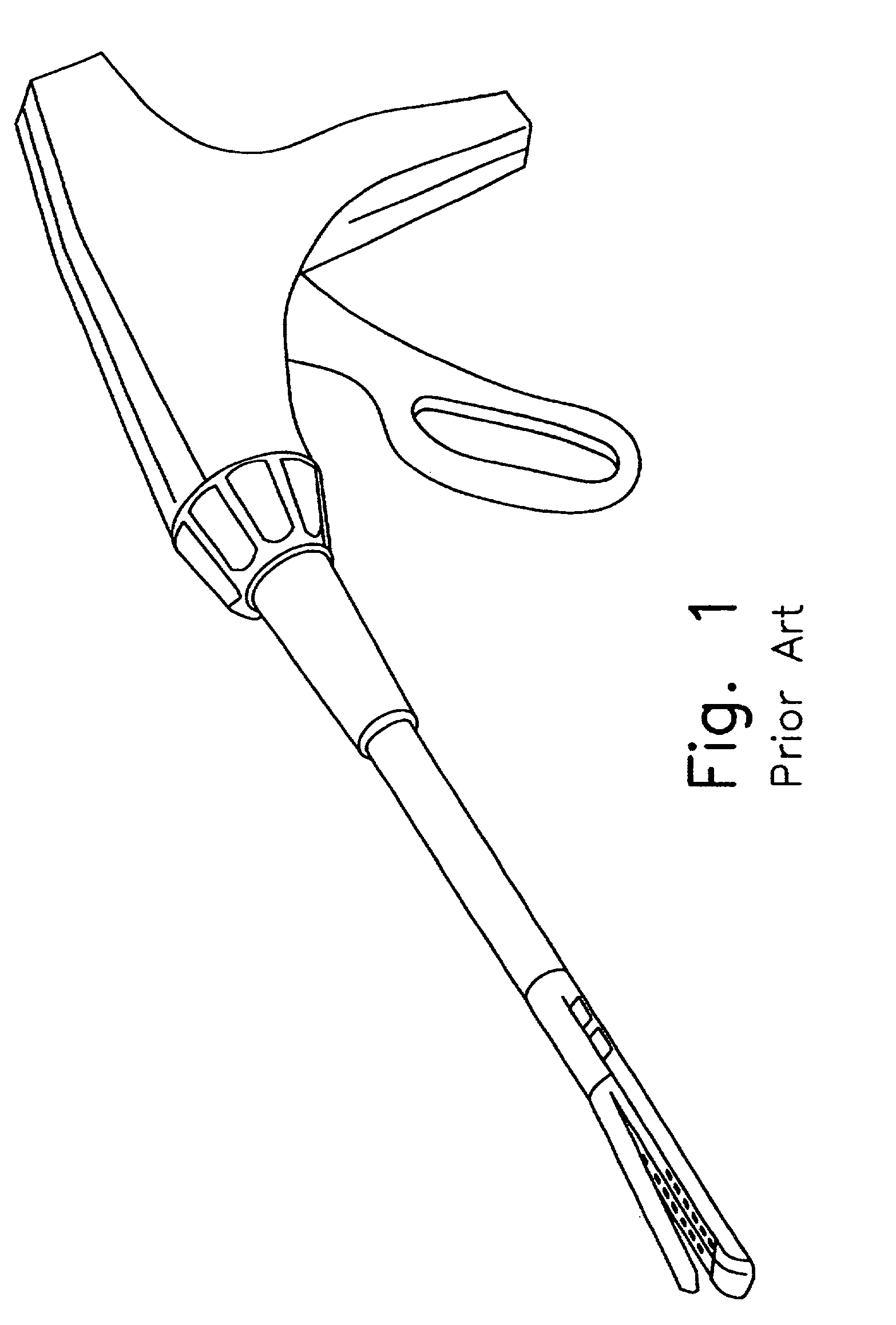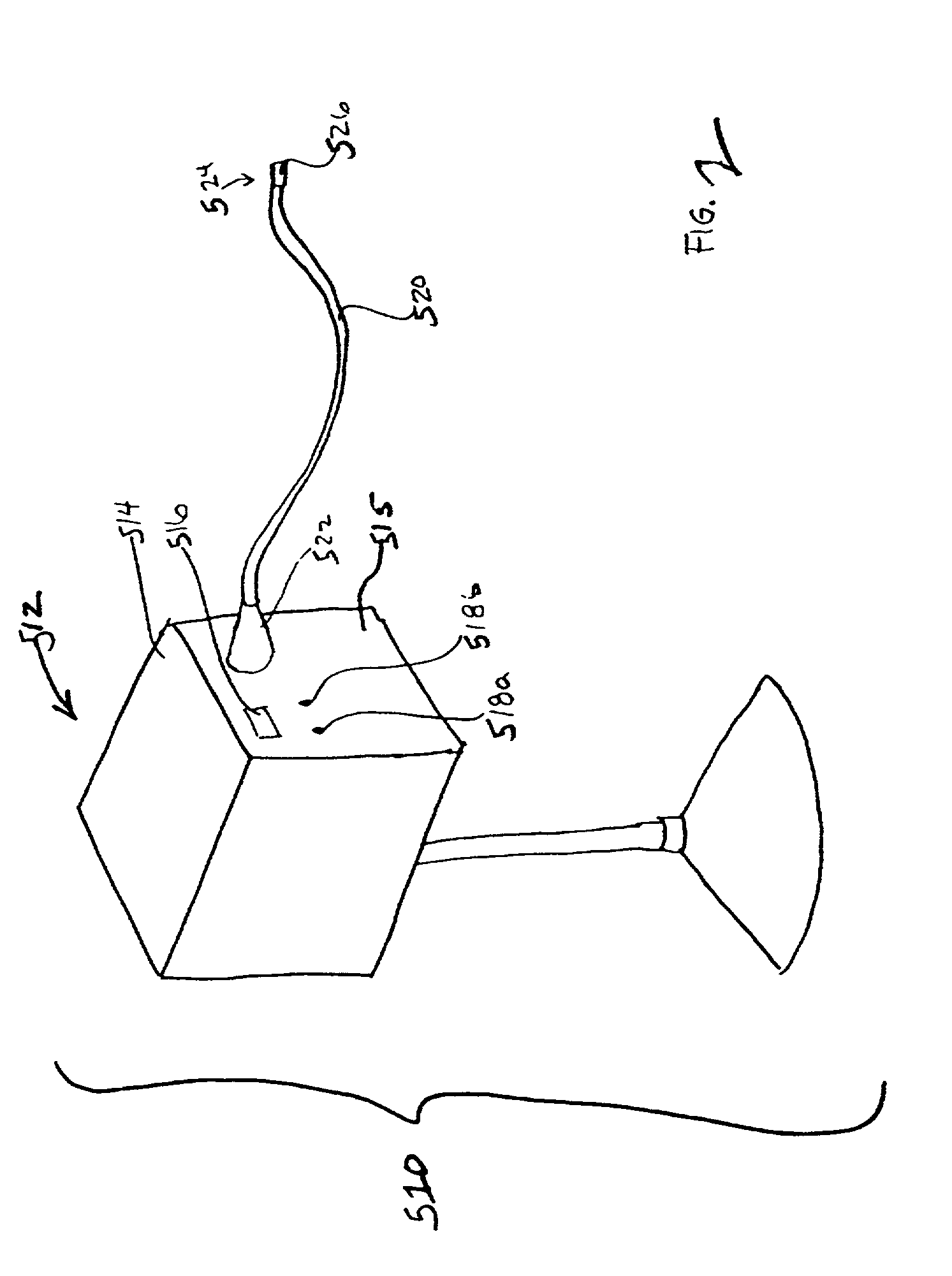Surgical device
a surgical device and surgical technology, applied in the field of surgical devices, can solve the problems of increasing the difficulty of manipulating the device, and increasing the torque required to cut and staple a tissue section, so as to reduce the tendency of the upper and lower jaws to separate, reduce the torque, and reduce the distance between the upper and lower jaws
- Summary
- Abstract
- Description
- Claims
- Application Information
AI Technical Summary
Benefits of technology
Problems solved by technology
Method used
Image
Examples
Embodiment Construction
[0032]One example embodiment of a surgical device according to the present invention is illustrated in FIGS. 3 to 20. Referring to FIGS. 3 and 4, an example embodiment of the surgical device 11, e.g., a linear clamping, cutting and stapling device, is illustrated. In this embodiment, a device 11 includes a parallel separating jaw system having a lower jaw 50 in opposite correspondence to an upper jaw 80 having a proximal end 100. FIG. 3 illustrates the device 11 in a closed position, in which the lower jaw 50 and the upper jaw 80 are in contact at both their proximal and distal ends. FIG. 4 illustrates the device 11 in an open position, wherein the lower jaw 50 and the upper jaw 80 are separated. For the purposes of illustration only, FIGS. 3 to 20 illustrate the opposing jaws 50 and 80, which remain parallel relative to each other. In an alternative example embodiment, opposing jaws 50 and 80 may open and close in scissor-like fashion, wherein the proximal ends of opposing jaws 50 ...
PUM
 Login to View More
Login to View More Abstract
Description
Claims
Application Information
 Login to View More
Login to View More - R&D
- Intellectual Property
- Life Sciences
- Materials
- Tech Scout
- Unparalleled Data Quality
- Higher Quality Content
- 60% Fewer Hallucinations
Browse by: Latest US Patents, China's latest patents, Technical Efficacy Thesaurus, Application Domain, Technology Topic, Popular Technical Reports.
© 2025 PatSnap. All rights reserved.Legal|Privacy policy|Modern Slavery Act Transparency Statement|Sitemap|About US| Contact US: help@patsnap.com



